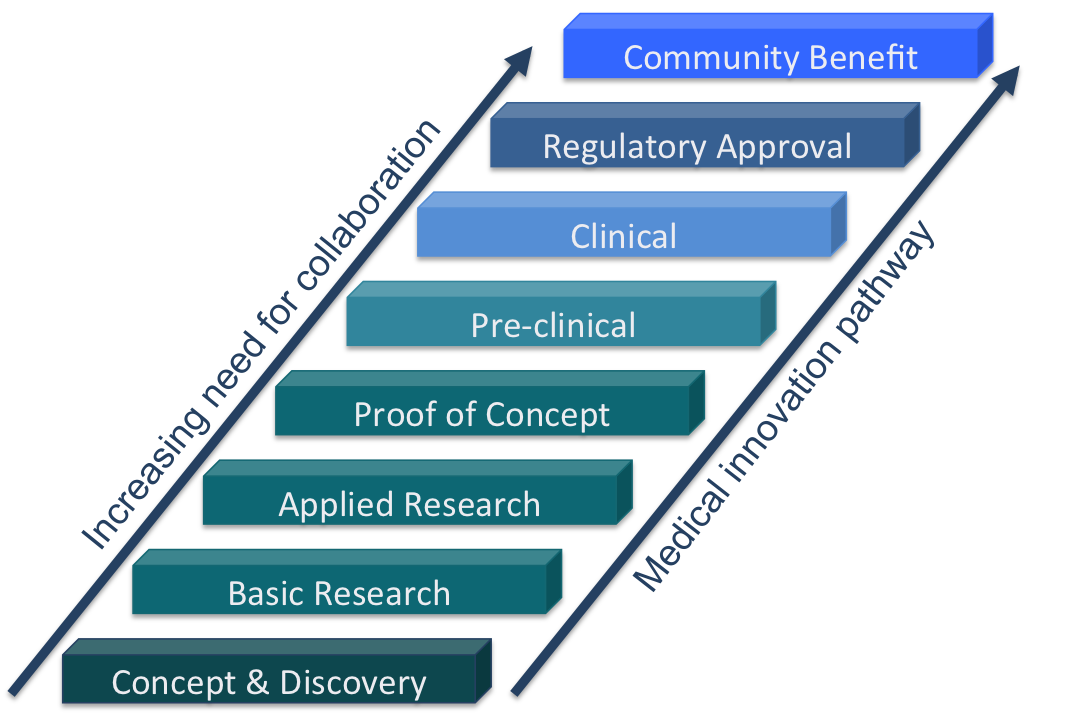Determining what success might look like is fundamental to developing strategy. Success for funders of research is of course not only about the outcomes of the research they fund, but also about the success of their own organisations. 
Reviewing an organisation’s position within the changing future funding of medical research ecosystem includes identifying opportunity, risk management and an appetite for change.
Deciding where an organisation fits within the ‘research puzzle’ will help an organisation determine its competitive advantage and to build relevant capability and capacity for success.
It is important for organisations to not only decide and communicate what they support, but also, what they do not.
The first dimension
Many foundations look to differentiate themselves by disease or condition. Disease or condition alone is not a strategy, but it can assist with fundraising where donors have a personal connection. It may also help with building expertise and the development of unique capabilities and capacity to support their community.
More common diseases generally have access to a larger population of donors with personal experience, but also often face greater competition due to the number of other charities working in the same area.
Many donors don’t look beyond the disease. They have never looked at a foundation’s webpage or annual report. One model of fundraising relies on many donors, making small donations and provides a small margin. These donations are often spur of the moment contributions without due-diligence or follow up. Typically they are conducted through door-knocking, telemarketing, on the street or in the shopping centre. NFMRI does not undertake any of these acitvities.
In the puzzle each column on the front (blue) face of the cube would represent a different disease or condition. Research, however, isn’t one-dimensional. In fact, research is encouraged to be multidisciplinary and to cross-fertilise. Co-morbidity is also another significant reason for collaboration across disease areas.
The second dimension 
Health and medical research is a ubiquitous term where the language can be confusing.
Health and medical research can range in activities including patient care, clinical services, community medicine, preventative health and the development of new drugs, devices and diagnostics.
The NHMRC previously referred to the fields of research as public health, health services, clinical medicine and biomedical. The yellow columns in the puzzle represent these fields. The fields can be relevant for each disease or condition but the research activities can be very different.
By looking at the second (yellow) dimension that considers fields of research foundations can support the diseases and conditions in areas of need and continue to build further expertise to assist in delivering community benefits. This dimension can also help foundations refine what success may look like, differentiate themselves in the research ecosystem and build processes, systems, expertise and networks that can value-add to the research they support.
The third dimension
Research translation is another term that may be referred to differently within the health and medical research sector. In essence it is all about turning the research into an accessible benefit for the community.
The confusion can arise in communication as each field and disease can have a related but different translational pathway and outcome. In our puzzle the red face represents this.
In some cases translation requires changes in policy and practice; in others education to health care practitioners or the community may be required. In biomedical research it requires regulatory approval (e.g. TGA or FDA). In each case, the translational pathway can differ.
 The third dimension allows for more sophisticated support programs to be developed that supports the translation of research and provides an opportunity to target support towards key activities where support and value-adding activities can be best applied.
The third dimension allows for more sophisticated support programs to be developed that supports the translation of research and provides an opportunity to target support towards key activities where support and value-adding activities can be best applied.
In our case, NFMRI supports biomedical research by targeting activities along the innovation pathway.
Having an effective giving strategy to deliver an organisations purpose that contributes to the wider ecosystem can provide efficiencies and deliver increased community benefits.
The opportunity exists for organisations such as the ATO and ACNC to play a greater role in strategy development by providing increased statistical information on giving that allows organisations to understand gaps and opportunities. Join the conversation in Sydney during September. Putting rubber on the road.

